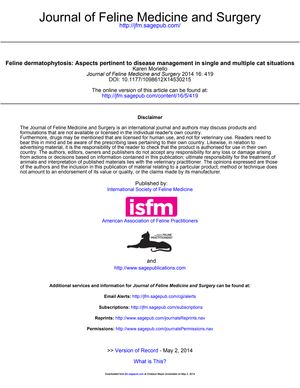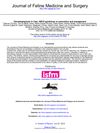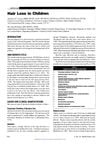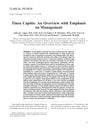Feline Dermatophytosis: Contagion, Diagnosis, and Treatment
May 2014
in “
Journal of feline medicine and surgery
”

TLDR Combining systemic and topical treatments, guided by weekly fungal cultures, effectively treats cat ringworm.
The 2014 article on feline dermatophytosis highlights the disease's contagious nature, with Microsporum canis as the most common pathogen. It emphasizes the need to differentiate between fomite carriers and truly infected cats, as this distinction affects treatment and management. Diagnostic methods include Wood's lamp examination and fungal culture, with the latter being the gold standard. The 'CCATS plan' is recommended for treatment, involving confinement, cleaning, assessment, topical therapy, and systemic therapy. The document stresses the importance of weekly fungal cultures to identify mycological cure and minimize treatment duration and costs. Topical therapies are necessary alongside systemic therapies to ensure complete eradication of the fungus. The paper concludes that while there is no single best treatment protocol, a combination of systemic and topical therapies, guided by weekly fungal cultures, is effective in treating feline dermatophytosis.





